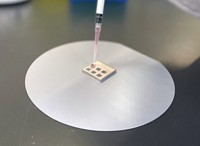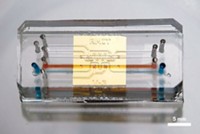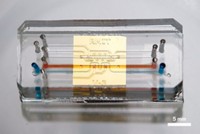Advertisement
Grab your lab coat. Let's get started
Welcome!
Welcome!
Create an account below to get 6 C&EN articles per month, receive newsletters and more - all free.
It seems this is your first time logging in online. Please enter the following information to continue.
As an ACS member you automatically get access to this site. All we need is few more details to create your reading experience.
Not you? Sign in with a different account.
Not you? Sign in with a different account.
ERROR 1
ERROR 1
ERROR 2
ERROR 2
ERROR 2
ERROR 2
ERROR 2
Password and Confirm password must match.
If you have an ACS member number, please enter it here so we can link this account to your membership. (optional)
ERROR 2
ACS values your privacy. By submitting your information, you are gaining access to C&EN and subscribing to our weekly newsletter. We use the information you provide to make your reading experience better, and we will never sell your data to third party members.
Analytical Chemistry
Allergy Test Could Spot Unexpected Milk Allergens
Medical Diagnostics: Test can identify both common and unfamiliar milk allergens for a patient
by Louisa Dalton
June 24, 2014

Not all milk allergies are created alike. Some folks get hives from caseins, while others wheeze after eating whey proteins. Nine of milk’s more than 25 proteins show a tendency to trigger allergic reactions, so traditional diagnostics generally screen just those nine. Now Swiss researchers offer a diagnostic that can pinpoint not only the troublesome nine, but also any unexpected allergens (Anal. Chem. 2014, DOI: 10.1021/ac500525n). The method offers a comprehensive allergy diagnosis, plus a promising way to track down entirely new allergenic proteins in foods and the environment.
To get to the source of a milk allergy, physicians often order a component-resolved diagnostic, an assay that determines whether known milk allergens bind to a patient’s immunoglobulin E (IgE) antibodies. These antibodies are the ones that can spark allergic reactions.
In the new test, Hubert H. Girault and Natalia Gasilova of the Swiss Federal Institute of Technology, Lausanne, made magnetic beads dotted with antibodies that bind all IgE antibodies in an allergic patient’s blood serum. The researchers then chemically cross-link the patient’s IgE antibodies to the beads. When they expose these personalized beads to milk, the patient’s own antibodies bind his or her particular allergens within the milk.
With matrix-assisted laser desorption/ionization mass spectrometry, the researchers then identify all bound allergens. This allows researchers to predict the structure of even unfamiliar allergens.
The scientists demonstrated the method by identifying one patient’s four milk allergens. Now they are adapting the technique to pollen, where they hope to discover novel allergenic proteins.





Join the conversation
Contact the reporter
Submit a Letter to the Editor for publication
Engage with us on Twitter